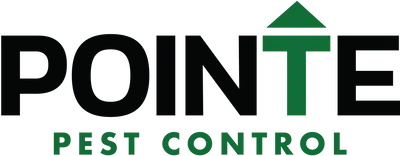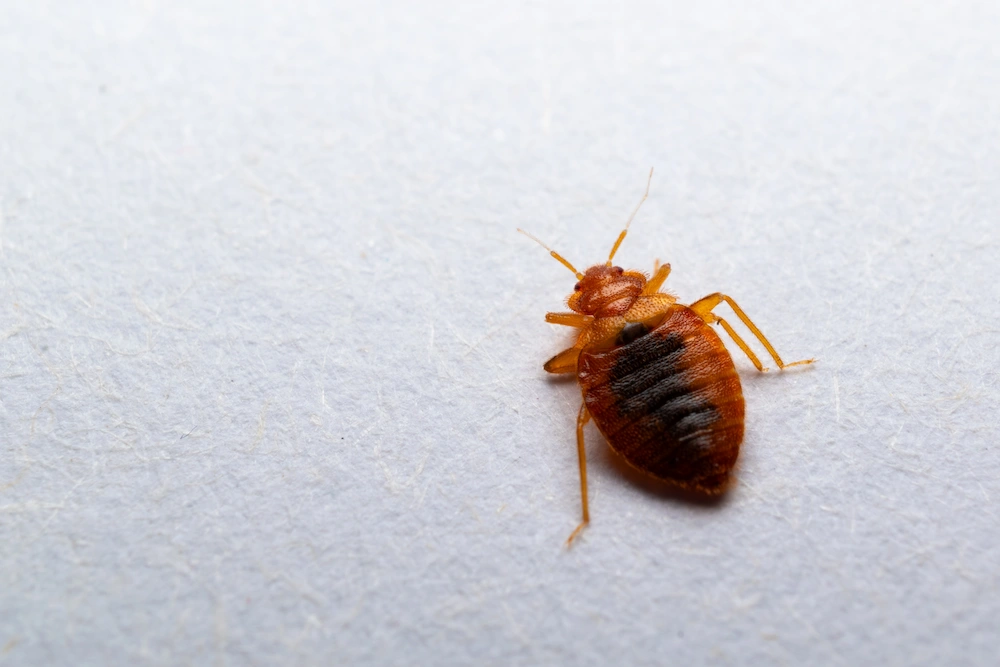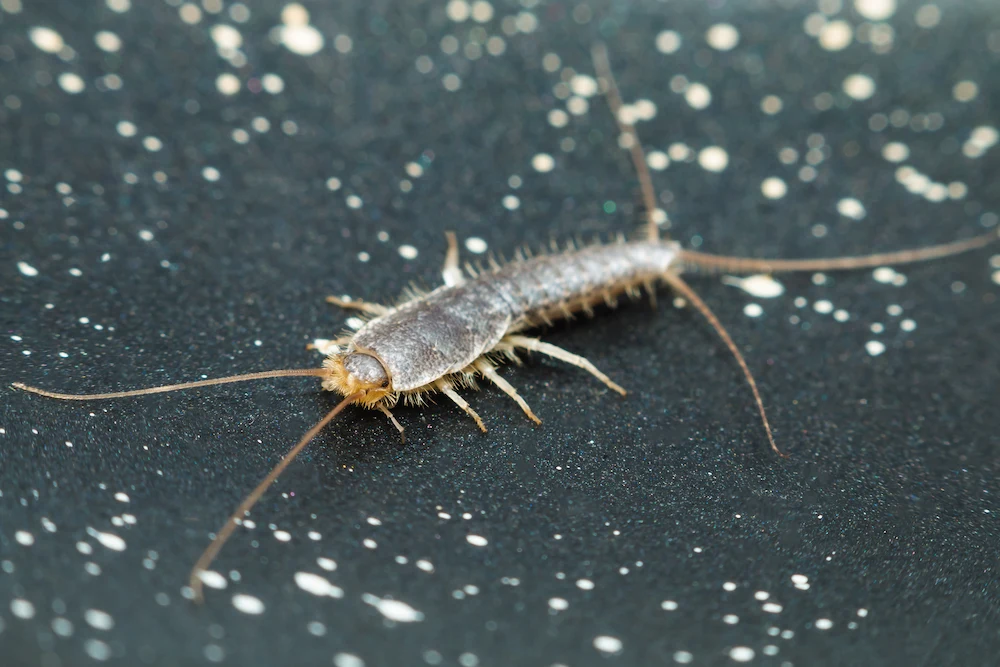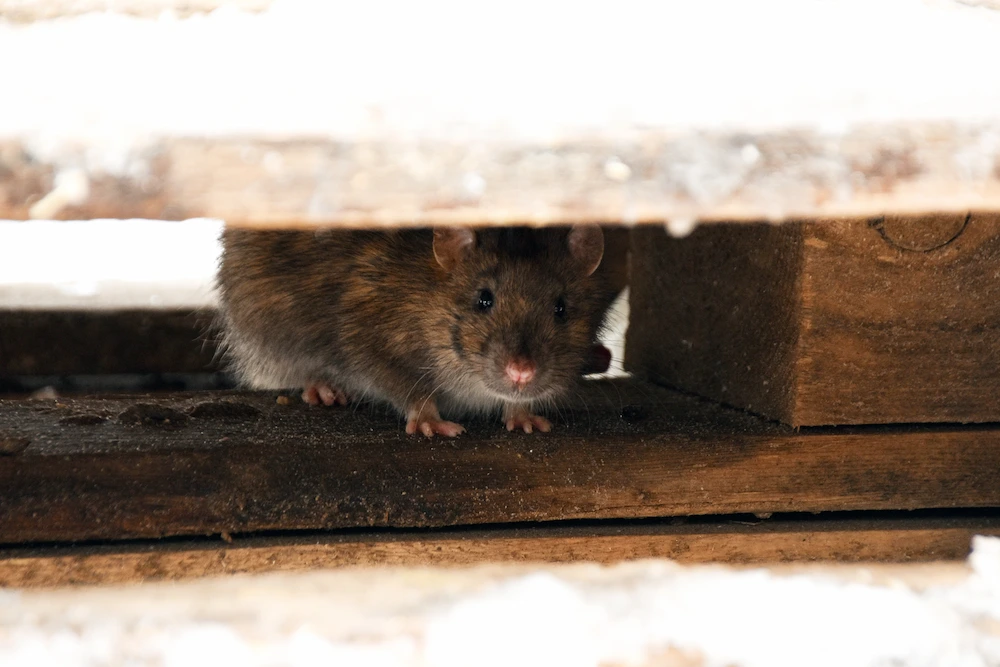Summary: A step-by-step homeowner’s guide on how to check for bed bugs throughout the home—not just on beds—including tools, high‑risk hideouts, signs to confirm, quick verification tips, what not to do, and next steps with professional help.
Noticing mysterious bites or tiny dark specks around your sleep space? Bed bugs are expert hitchhikers, but they don’t just hide in beds. This quick, practical guide walks you through how to check for bed bugs throughout your home so you can spot problems early and act fast. Trust us, a good night’s sleep is much more feasible when you know your space is bed bug-free.
Before You Start: Simple Tools That Make Inspection Easier
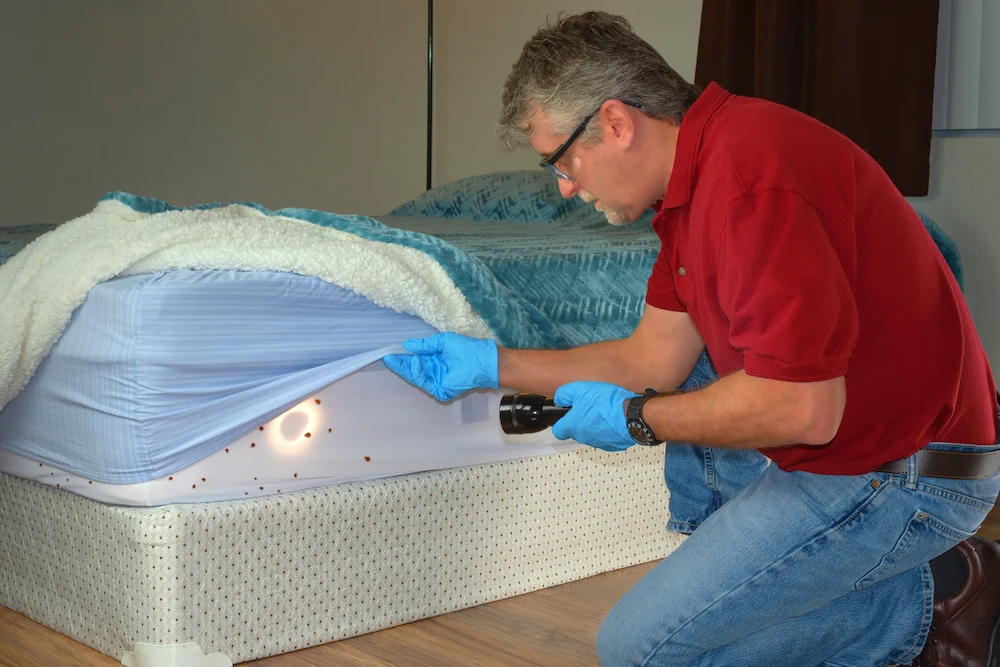
Projects require preparation, and this one is no different. You’ll want the right tools for spotting these tiny bugs since they flatten their bodies to fit in the tightest of spaces.
Our recommended tools for inspecting your home are:
• A flashlight or your phone’s flashlight (to look around the darker areas)
• A credit card or thin plastic card (to scrape along seams)
• A lint roller or clear packing tape (to lift tiny specks)
• A white sheet or pillowcase (to spot droppings more easily)
• Resealable bags or clean jars (to save samples for identifying later)
• Optional: bed-leg interceptor cups and a stiff brush (to catch any live bugs)
What to Look For As You Check for Bed Bugs

It’s helpful to know what you’re looking for before you begin the inspection. Bed bugs are reddish-brown and about ¼ of an inch long, so they’re not the most obvious pests. Look out for these signs when you check for bed bugs:
• Live bugs: Flat, apple-seed–sized adults and translucent nymphs
• Fecal spots: Tiny black dots that create a dark brown smear when dampened
• Cast skins: Papery, tan exoskeletons in clusters
• Eggs: Pearly white, pinhead-sized, and often tucked into seams
• Rusty smears on sheets: From crushed bugs or a recent feeding
• Odor: A sweet, musty scent that’s present in heavy infestations
Quick Checks That Help Confirm

If you see any bed bugs or strongly suspect that they’re around, there are a few easy ways to confirm. These are also helpful if you have a pest professional solve the problem later (which we recommend if there is a problem).
In the meantime, these are some quick ways you can check for bed bugs:
• Interceptors: Place bed-leg cups to catch bugs moving to and from the bed.
• White-sheet test: Make the bed with a white sheet and inspect in the morning for specks.
• Lint-roller pass: Roll along seams and labels to lift eggs or cast skins for closer inspection.
• Tape capture: Use clear tape and a plastic bag or clear jar to secure a bed bug for ID.
What Not to Do
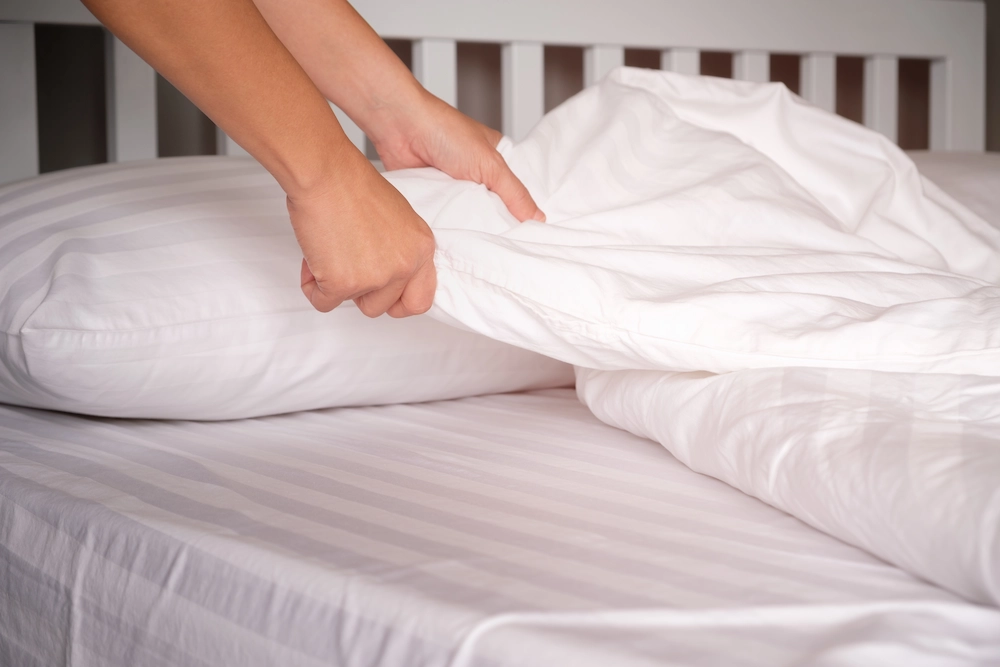
We’ve talked a lot about what to do, so it’s worth focusing on what not to do in this situation:
• Don’t rely on bite patterns alone. Other pest or skin issues can look similar, so it’s not a sure sign of bed bugs.
• Don’t spray random over-the-counter products. Many make infestations spread or cause the bugs to go deeper into hiding.
• Don’t drag infested items through the home. Bag them up before treating or tossing.
• Don’t toss items without a plan. Encasements and treatment are often effective.
Start at the “Sleep Zone”

They’re called bed bugs for a reason! We suggest starting your inspection in the house’s “sleep zones” to cover the most important base. Begin within a few feet of where people (and pets) sleep or sit for long periods. When you check for bed bugs, work methodically from top to bottom of each item:
• Mattress & box spring: Check along piping, tufts, labels, and the underside—especially around staples.
• Bed frame & headboard: Look behind and under the headboard, in screw holes, joints, and slats.
• Nightstands & decor: Inspect drawer corners, undersides of drawers, and around cords, clocks, and frames.
Go Beyond the Bed: Common Hiding Spots

Bed bugs follow people, not furniture brands. Just because there aren’t any bed bugs in the bedrooms doesn’t mean the rest of the house is clear. After you check for bed bugs in the sleep zone, continue here:
• Sofas & recliners: Check seams, crevices, and under dust covers on the underside.
• Baseboards & carpet edges: Look where the wall and floor meet, around door frames, and under rugs.
• Curtains & blinds: Inspect folds, hems, and the curtain rod.
• Bags & closets: Look through backpacks, laundry hampers, and stored bedding.
• Outlets & switch plates: Look around the cover’s edges without touching the electrical components.
• Vehicles & office chairs: Inspect seat seams, headrests, and plastic-to-fabric edges.
Found Signs? Take the Next Steps
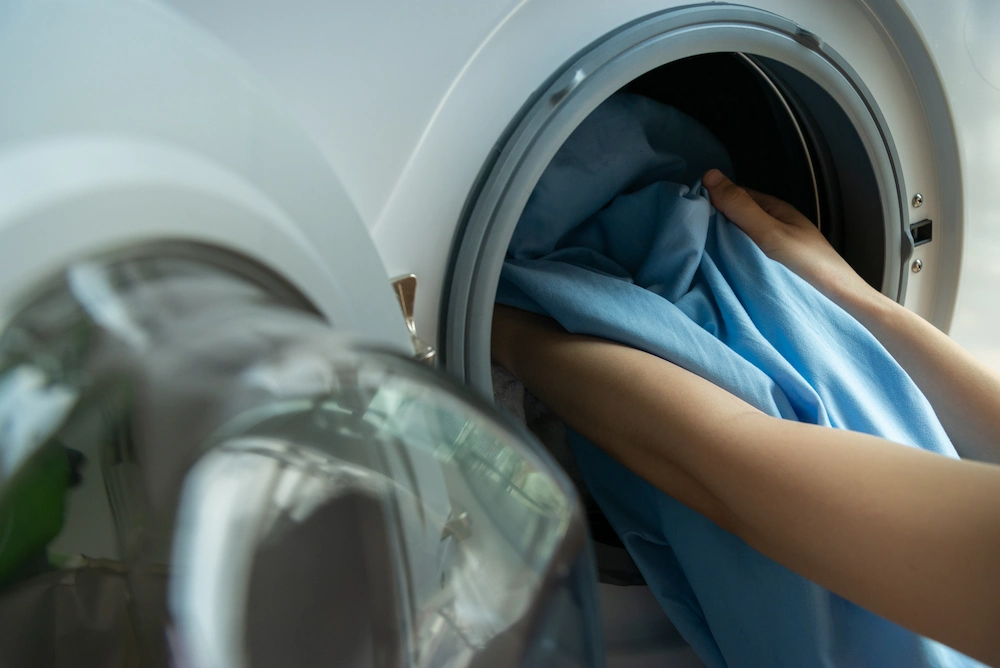
In the event that you find signs of bed bugs, these are the recommended next steps:
1) Document: Take clear photos and save a sample in a sealed bag or jar.
2) Heat & laundry: Wash and dry clothing and bedding on high heat (as fabric allows).
3) Clean tight spaces: Remove idle clutter, vacuum crevices with a crack-and-crevice tool, and bag and discard the vacuum contents.
4) Encase: Install quality mattress and box spring encasements.
5) Call a pro: A certified specialist can confirm and eliminate an infestation efficiently. Explore Pointe Pest Control’s Residential Bed Bug Control options or see local help for Bed Bug Control in Spokane.
Need a hand right now? Get a free quote on services from our certified bed bug specialists today. We serve communities across Washington, Oregon, Idaho, and Montana.
Citations
How to find bed bugs. (2025, September 11). US EPA. Retrieved September 24, 2025, from https://www.epa.gov/bedbugs/how-find-bed-bugs
